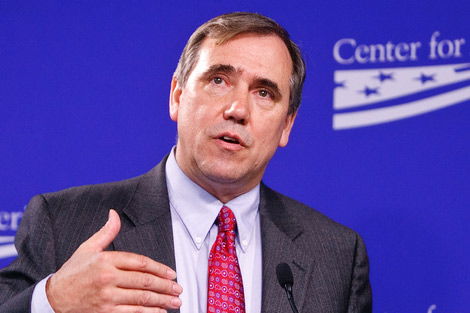
It’s the strategy of every bad gambler: If you just keep betting more than you lost, you’ll eventually come out ahead. Lose $10, bet $20. Lose that, bet $30. In a rigged game, though, a game where the odds are tilted however slightly against you, eventually you’ll go broke, making one or two huge bets that don’t pay off.
Which is the situation the U.N. finds itself in during its current climate negotiations in Qatar. When it comes to the carbon dioxide levels we need to maintain in order to avoid catastrophic temperature rises of 2 degrees C, we’re deep in debt, meaning that we’d need steeper and steeper bets in order to win.
From Reuters:
“The possibility of keeping warming to below 2 degrees has almost vanished,” Pep Canadell, head of the Global Carbon Project at Australia’s Commonwealth Scientific and Research Organization, told Reuters. …
Global emissions of carbon dioxide (CO2), the main greenhouse gas, have risen 50 percent since 1990 and the pace of growth has picked up since 2000, Canadell said. In the past decade, emissions have grown about 3 percent a year despite an economic slowdown, up from 1 percent during the 1990s.
Based on current emissions growth and rapid industrial expansion in developing nations, emissions are expected to keep growing by about 3 percent a year over the next decade.
For the talks to have any chance of success in the long run, emissions must quickly stop rising and then begin to fall. Temperatures have already risen by 0.8 C (1.4 F) since pre-industrial times.
If we can just slash emissions by 3 percent, by 5 percent, by whatever percent next year, we can avoid disaster. Avoid coming up broke.
The Washington Post‘s Brad Plumer makes the same point, using the graph below.

Climate Action TrackerClick to embiggen.
The graph is from a report by Climate Action Tracker [PDF] that outlines the various mechanisms and strategies under which we could stay below the 2 degree C mark. In other words: the bigger bets we need to make. Ignore the boxes in that graph. Focus on the lines. Steeper and steeper lines mean bigger and bigger bets.
My analogy breaks down in one way. If you’re sitting at a roulette table, trying to break even, to save your shirt, you actually make the bet. In the case of taking action to slow climate change, the world isn’t even in the game.



